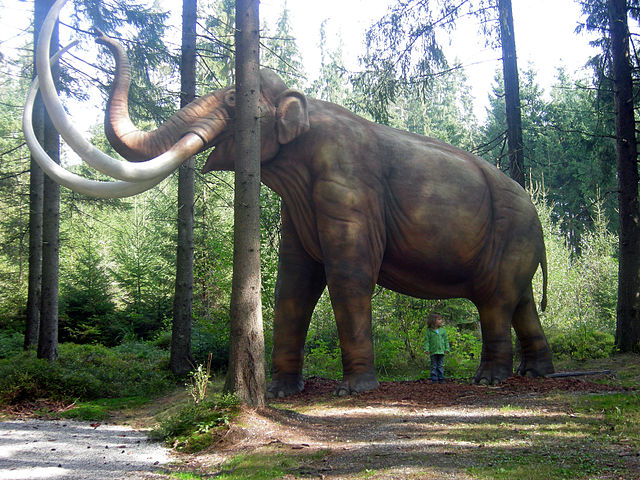In a tale that reads like an adventure straight out of history, a group of intrepid miners in Dawson City, Yukon, set out with hopes of striking gold. Little did they know, they were about to stumble upon a different kind of treasure—one that belonged to a time long past. As their shovels delved into the earth, they uncovered a stunning trove of woolly mammoth bones, igniting a captivating journey into prehistoric times.
A Discovery for the Ages

Trey Charlie, one of the miners at Little Flake Mine, described the discovery as a remarkable day in his career. He, along with a fellow miner, found themselves face-to-face with the remains of a long-extinct family of woolly mammoths. The excitement was palpable as they unearthed bones that had been hidden beneath layers of soil for millennia.
The bones, ranging from ribs to teeth and even a massive tusk, were not only awe-inspiring but also rich with potential insights into the distant past. The miners, despite not striking gold in the conventional sense, had struck a rich vein of history that held clues to the lives of these ancient giants.
A Family Reunion Frozen in Time
Upon closer examination, it became evident that the discovered fossils were not isolated remains but rather parts of a larger puzzle. Grant Zazula, the head paleontologist for the Yukon government, explained that they had come across the bones of three woolly mammoths—a large full-grown mammoth, a younger adult, and a juvenile. The significance of this find was not lost on Zazula; he speculated that these mammoths could have been part of the same family or herd, and their proximity suggested that they may have met their demise together.

The bones were found in close proximity to a layer of volcanic tephra, indicating an age of around 29,000 years. This timeline neatly aligned with what scientists already knew about woolly mammoths, who are believed to have roamed the northern expanses of present-day Canada thousands of years ago.
A Glimpse into a Frozen Past
Woolly mammoths were perfectly adapted to the cold, dry, and treeless landscapes they inhabited. Their colossal frames and shaggy coats helped them brave the unforgiving conditions, but their reign eventually came to an end around 10,000 years ago. A combination of environmental challenges and human hunting contributed to their extinction, marking the close of an awe-inspiring chapter in Earth’s history.

Yet, the exact circumstances that led to the demise of these three woolly mammoths remain a mystery. Zazula likened the task of unraveling their fate to a detective story, and with the help of modern scientific techniques, the bones would yield their secrets. DNA analysis and carbon dating would offer valuable clues about their relationships and the time of their passing.
Echoes of the Past
While the unearthing of woolly mammoth bones might seem extraordinary, it’s a reminder of the intriguing stories the Earth holds within its layers. Throughout history, miners have inadvertently brought to light remnants of ancient times, just as they did during the Klondike Gold Rush of 1896. In fact, a decade ago, Yukon miners stumbled upon a complete mammoth skull, a testament to the hidden treasures that lie beneath the surface.
And sometimes, nature herself takes the role of an archaeologist. In 2016, a Canadian duck hunter found a woolly mammoth femur bone in the waters of Ontario’s Crow River, showcasing that remarkable finds can happen when least expected.
A Global Tale
The story of woolly mammoth bones isn’t confined to the icy reaches of northern Canada. A discovery of around 60 mammoth bones near Mexico City in 2020 revealed the widespread distribution of these ancient creatures. An exclamation by a Mexican archaeologist summed it up well: “There are too many, there are hundreds.”
Despite the many findings, the excitement of each discovery remains undiminished. Grant Zazula’s enthusiasm for the gold miners’ mammoth bones is infectious. As he looks forward to an exciting summer of exploration and analysis, it’s clear that these ancient remains continue to captivate and inspire us with the secrets they hold.
Conclusion
The accidental discovery of a trove of woolly mammoth bones by gold miners in the Yukon has offered a tantalizing glimpse into a world that existed tens of thousands of years ago. This extraordinary find speaks to the persistent allure of history hidden beneath the earth’s surface. As scientists delve into the remains, the story of these mammoths and their fate promises to enrich our understanding of the past and the mysteries it holds.



